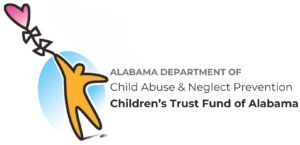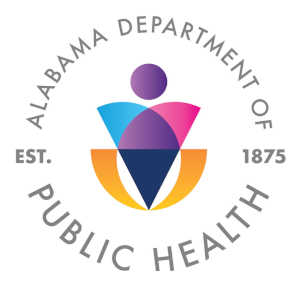Delivery services have become an integral part of many people’s lives. Between Amazon Prime, UberEats, Doordash, and Instacart, people can get almost anything delivered right to their front door. And, with the COVID-19 pandemic keeping people at home more and away from busy stores, more and more industries are moving towards a business model that includes home delivery. Alcohol is no exception.
Unfortunately, the rapid growth of at-home delivery services has made it easier for minors to get their hands on alcohol. Between loopholes in companies’ regulatory systems and non-compliance with state and federal laws, it is now easier than ever for underage people to buy alcohol and have it delivered right to their homes.
Legal Requirements for At-Home Alcohol Delivery
In most U.S. states and territories, people cannot purchase or legally consume alcohol until they are 21.[1] As a result, stores and liquor distributors generally ask to see valid identification before selling you alcohol so they can confirm a person’s age. The same idea is supposed to apply to alcohol deliveries.
Uber, for example, requires delivery persons to validate the age of customers who order alcoholic beverages. According to Uber’s website, the app prompts drivers to take a photo of the customer’s ID card (front and back) to make sure the person is over the age of 21.[2]
Similarly, Doordash’s alcohol delivery policy states that both drivers and customers must provide a valid ID upon picking up and dropping off the order.[3]
The problem is not all delivery drivers comply and there are loopholes in the system. Many U.S. states such as California and Alabama have reported that delivery apps routinely allow minors to order and receive alcohol.
Failure to Comply With Legal Requirements Gives Teens Access to Alcohol
An investigation conducted by the California Department of Alcoholic Beverage Control found that third-party delivery apps were regularly delivering alcoholic beverages to minors.[4] Rather than waiting at the door to check the customer’s ID, many delivery drivers have been caught leaving orders on their customer’s doorsteps and leaving for their next delivery. While “no contact” deliveries have become extremely popular as a result of the COVID-19 pandemic, this type of delivery is not supposed to happen when it comes to delivering alcohol.
Reports claim up to 80% of alcoholic beverages ordered through third-party apps are delivered without requiring proof of ID.[5] Failing to comply with ID checks allows minors to easily obtain alcohol.
Why At-Home Alcohol Delivery is Easy to Hide From Parents
 One of the best things about food delivery apps today is that they tend to the needs of any customer. When a person places an order on an app like Uber Eats, DoorDash, or Postmates, they can select the type of delivery they want and add delivery instructions. Customers can choose from options like “leave at door,” “no contact delivery,” “meet at door,” or “meet outside.” Customers can also type in their own delivery instructions to tell drivers where to leave their food.
One of the best things about food delivery apps today is that they tend to the needs of any customer. When a person places an order on an app like Uber Eats, DoorDash, or Postmates, they can select the type of delivery they want and add delivery instructions. Customers can choose from options like “leave at door,” “no contact delivery,” “meet at door,” or “meet outside.” Customers can also type in their own delivery instructions to tell drivers where to leave their food.
Even if parents are home, teens can easily use their delivery app to order alcohol, request a no-contact delivery, tell the delivery person not to knock when dropping off the order, and even have them place the order in a discreet location so their parents don’t see. Teens can also wait until their parents go to sleep to order a no-contact delivery, after all, many of these third-party apps run 24/7, making alcohol accessible at all hours of the day.
In the event that the delivery driver does require ID, teens who cannot provide ID or provide false ID may have their orders canceled. However, there is nothing stopping them from placing another order and getting a delivery driver who would rather drop off the order and move on to the next without taking time to check ID. With 80% of alcohol deliveries not asking for ID, the odds are in these teens’ favor.
What Parents Can Do to Prevent Underage Drinking
According to the Washington Post, more than half of American 20-year olds have tried alcohol at some point in their lives.[1] With the rise of underage drinking due to non-compliant, third-party delivery apps, it’s important for parents to intervene and engage in practices that can prevent teen alcohol abuse.
Some steps parents can take include:
- Talking with their child about alcohol abuse and discussing safe drinking practices
- Establishing policies, expectations, and rules that are going to be enforced regarding alcohol use
- Encouraging open conversation with their kids on the topics of drug and alcohol use
- Becoming educated on their state’s laws regarding underage drinking and alcohol delivery
- Not storing payment methods in their kid’s delivery apps, requiring kids to get payment information from their parents each time they want to place an order
- Having a continued dialogue with teens about technology and social media
- Not abusing alcohol in front of their kids and leading by example
By using open, respectful communication while setting clear boundaries and expectations, parents can significantly influence their teen’s decisions about drug and alcohol use.[6] At the same time, it’s important for parents to be aware of the possibility of alcohol delivery via food delivery apps so they can appropriately monitor their kids’ internet use and behaviors.
References:
- https://www.washingtonpost.com/news/wonk/wp/2016/05/18/where-teenagers-can-legally-drink-in-the-u-s-yes-really/
- https://help.uber.com/ubereats/article/why-is-my-delivery-person-taking-pictures-of-my-id-when-i-order-alcohol?nodeId=679b5675-45f3-43fc-a0e9-f8ea059f8ed8
- https://help.doordash.com/dashers/s/article/Delivering-Alcohol-Guidelines?language=en_US
- https://www.abc.ca.gov/delivery-of-alcoholic-beverages/
- https://thetakeout.com/third-party-delivery-apps-are-selling-alcohol-to-minors-1843445010
- https://www.niaaa.nih.gov/publications/brochures-and-fact-sheets/parenting-prevent-childhood-alcohol-use









